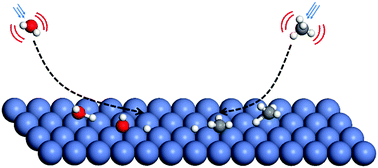Quantum dynamics of polyatomic dissociative chemisorption on transition metal surfaces: mode specificity and bond selectivity
Abstract
Dissociative chemisorption is the initial and often rate-limiting step in many heterogeneous processes. As a result, an in-depth understanding of the reaction dynamics of such processes is of great importance for the establishment of a predictive model of heterogeneous catalysis. Overwhelming experimental evidence has suggested that these processes have a non-statistical nature and excitations in various reactant modes have a significant impact on reactivity. A comprehensive characterization of the reaction dynamics requires a quantum mechanical treatment on a global potential energy surface. In this review, we summarize recent progress in constructing high-dimensional potential energy surfaces for polyatomic molecules interacting with transition metal surfaces based on the plane-wave density functional theory and in quantum dynamical studies of dissociative chemisorption on these potential energy surfaces. A special focus is placed on the mode specificity and bond selectivity in these gas–surface collisional processes, and their rationalization in terms of the recently proposed Sudden Vector Projection model.

- This article is part of the themed collection: Surface Reaction Dynamics


 Please wait while we load your content...
Please wait while we load your content...